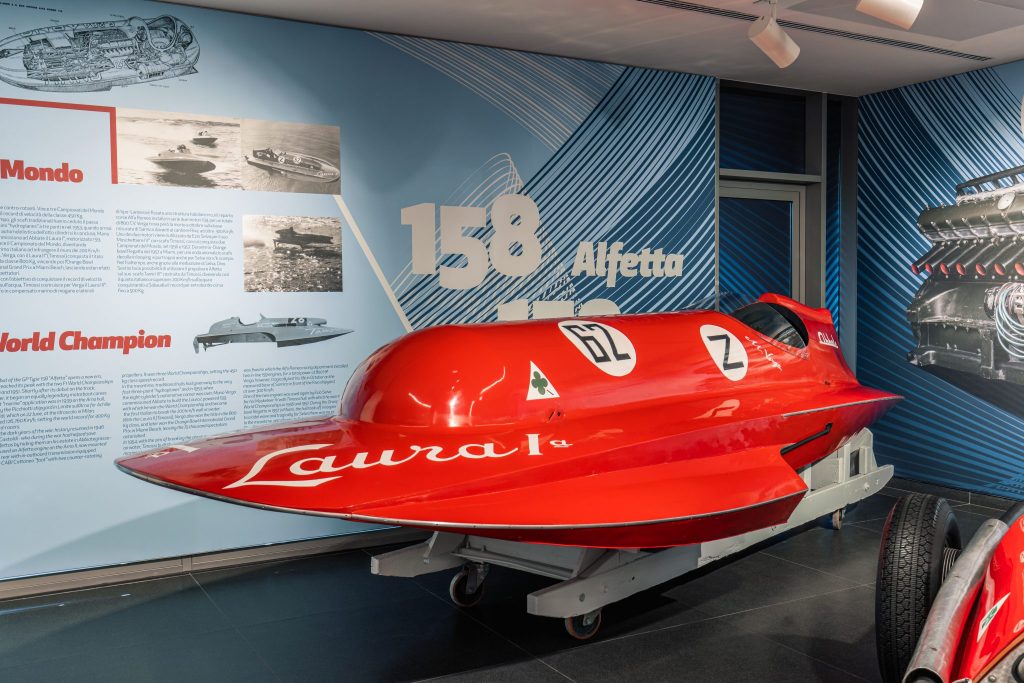As Alfa Romeo continues to celebrate 110 years of making some of the most emotive cars the world has ever seen, it’s also taking the opportunity to shine a light on some of the brand’s lesser-known adventures in engineering, including Alfa Romeo racing boats.
Alfa’s victories on land – including the first two Formula 1 world championships, 11 Mille Miglia wins, and 10 Targa Florio titles – are an impressive legacy, but the Arese factory also produced multiple winners on the water. Alfa Romeo racing boats hold 11 world records, six world championships, seven European championships, and nine Italian championships won between the 1930s and 1970s.

It was the versatility of the Alfetta 158 engine that powered Alfa’s initial success. In 1938 Achille Castoldi bagged the exclusive rights to use the 158 engine, but racing was soon interrupted by hostilities in Europe. During the war years he hid a number of engines away on his farm in Abbategrasso, which meant that Alfa could resume racing again after the war. The 158, fitted to the monohull Arno II, won the Luino Cup in 1948.

The 158 would next see service in Formula 1, taking Nino Farina and Juan Manuel Fangio to championship wins in 1950 and 1951. After Alfa left the grid the amazing Alfetta engine would, once again, take to the water and take more more victories. Mario Verga won the 450-kg Class in Laura I, then took the 1953 800-kg championship in Laura II before installing twin supercharged Alfetta engines in Laura III and hit 170 mph on Lake Iseo. Tragically, in 1954, as Verga tried to go faster still, Laura III crashed. Verga was killed instantly.
Other notable nautical successes include the 1300-cc Giulietta-powered Loustic 2, which won three titles in 1964, the extraordinary Molinari-Alfa Romeo 2500 of 1966, which featured bodywork designed by helicopter manufacturer Agusta, and the 1970 “Celli” powered by a marine version of the Montreal-Autodelta V6.
All these aquatic Alfas and more are on display at a new exhibition “Sea Horses” at Alfa Romeo’s museum in Arese until February 2021.








